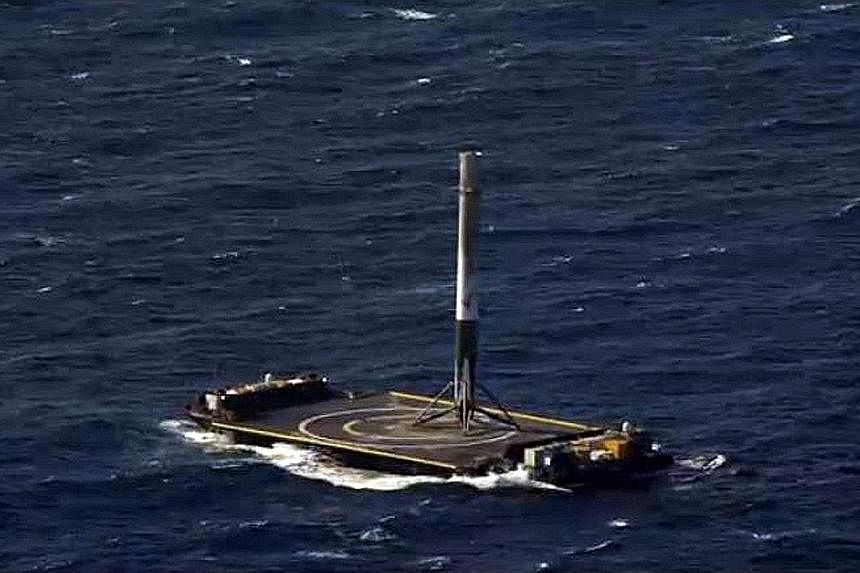CAPE CANAVERAL (Florida) • A SpaceX Falcon 9 rocket blasted off from Florida on a cargo run for the International Space Station on Friday, and its reusable main-stage booster landed on an ocean platform in a dramatic space-flight first.
The lift-off at 4.43pm Eastern Daylight Time (4.43am Singapore time yesterday) from Cape Canaveral marked the resumption of resupply flights by privately owned Space Exploration Technologies for Nasa following a launch accident in June last year that destroyed a different cargo payload for the space station.
About 21/2 minutes after Friday's launch, the main part of the 23-storey-tall, two-stage SpaceX rocket separated, turned around and headed towards a landing platform floating in the Atlantic about 300km north-east of Cape Canaveral.
A live video feed broadcast on Nasa television showed the rocket booster, its four landing legs extended, descending over the ocean before settling itself upright on the platform, roughly eight minutes after launch.
"We have a Falcon 9 on board," a crewman on a nearby recovery vessel radioed to the SpaceX mission control.
Four previous at-sea landing attempts had failed. But a Falcon 9 main-stage rocket achieved a successful ground-based touchdown in December, the first-ever during an actual commercial space mission.
Friday's feat marked yet another major milestone in the quest by high-tech entrepreneur Elon Musk, founder and chief executive of the private launch service, to develop a cheap, reusable launch vehicle.
Speaking to reporters later, Mr Musk said that being able to return costly rocket parts for repeated use, instead of jettisoning them into the ocean after each launch, will make space flight less expensive and less harmful to the environment.
"It is just as fundamental in rocketry as it is in other forms of transport, such as cars or planes or bicycles or anything," said Mr Musk, who also runs Tesla Motors.
Mr Musk said it costs around US$300,000 (S$405,000) to fuel a rocket, but US$60 million to build one. "If you have got a rocket that can be fully and rapidly reused, it is somewhere on the order of a 100-fold cost reduction in marginal costs," he said, adding that he hoped his competitors would follow suit.
The rocket's cargo ship, dubbed Dragon, was due to arrive today at the International Space Station, the US$100 billion laboratory flying about 400km above Earth.
REUTERS, AGENCE FRANCE-PRESSE

